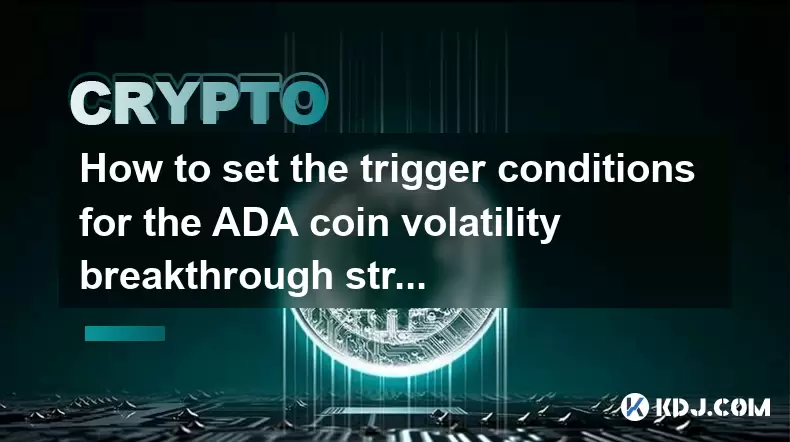-
 Bitcoin
Bitcoin $119600
0.45% -
 Ethereum
Ethereum $4671
8.16% -
 XRP
XRP $3.250
2.78% -
 Tether USDt
Tether USDt $0.9999
0.01% -
 BNB
BNB $838.0
3.17% -
 Solana
Solana $198.5
12.77% -
 USDC
USDC $0.9997
-0.01% -
 Dogecoin
Dogecoin $0.2396
6.18% -
 TRON
TRON $0.3547
2.21% -
 Cardano
Cardano $0.8583
9.20% -
 Chainlink
Chainlink $24.42
13.29% -
 Hyperliquid
Hyperliquid $44.08
1.42% -
 Stellar
Stellar $0.4492
2.37% -
 Sui
Sui $3.915
6.09% -
 Bitcoin Cash
Bitcoin Cash $612.9
3.02% -
 Hedera
Hedera $0.2627
5.34% -
 Ethena USDe
Ethena USDe $1.000
-0.03% -
 Avalanche
Avalanche $24.94
7.83% -
 Litecoin
Litecoin $132.6
10.48% -
 Toncoin
Toncoin $3.439
1.39% -
 UNUS SED LEO
UNUS SED LEO $9.212
2.34% -
 Shiba Inu
Shiba Inu $0.00001371
4.89% -
 Uniswap
Uniswap $11.54
1.13% -
 Polkadot
Polkadot $4.211
7.67% -
 Dai
Dai $0.9998
-0.03% -
 Cronos
Cronos $0.1649
-1.62% -
 Ethena
Ethena $0.7975
-1.46% -
 Pepe
Pepe $0.00001235
9.15% -
 Bitget Token
Bitget Token $4.445
0.46% -
 Aave
Aave $323.7
8.18%
How to set the trigger conditions for the ADA coin volatility breakthrough strategy?
The ADA volatility breakthrough strategy uses Bollinger Bands, ATR, and volume to set trigger conditions for trading, aiming to profit from significant price movements in Cardano's cryptocurrency.
May 19, 2025 at 03:00 pm

Understanding the ADA Coin Volatility Breakthrough Strategy
The ADA coin volatility breakthrough strategy is a trading approach that seeks to capitalize on significant price movements in Cardano's native cryptocurrency, ADA. This strategy involves setting specific trigger conditions that, when met, prompt the execution of trades. The goal is to enter the market at the onset of a volatility surge, thereby maximizing potential profits from the ensuing price movement. Understanding these trigger conditions is crucial for effectively implementing this strategy.
Identifying Key Volatility Indicators
Before setting trigger conditions, it's essential to identify the key indicators that signal a potential volatility breakthrough. Common indicators used in this strategy include:
- Bollinger Bands: These help measure the volatility of ADA by plotting two standard deviations away from a simple moving average.
- Average True Range (ATR): This indicator measures market volatility by decomposing the entire range of an asset price for that period.
- Volume: High trading volume can indicate increased interest and potential volatility.
By monitoring these indicators, traders can better anticipate when a volatility breakthrough might occur.
Setting Up Bollinger Bands for ADA
To set up Bollinger Bands for ADA, follow these steps:
- Choose a trading platform that supports technical analysis, such as TradingView or Binance.
- Select ADA/USD or ADA/BTC as your trading pair.
- Add Bollinger Bands to your chart:
- Navigate to the indicators section and search for "Bollinger Bands."
- Set the period to 20, the standard deviation to 2, and apply it to the chart.
- Monitor the bands: A volatility breakthrough is often indicated when the price of ADA moves outside the upper or lower band.
Configuring the Average True Range (ATR) for ADA
The Average True Range (ATR) is another crucial tool for setting trigger conditions in the ADA volatility breakthrough strategy. Here's how to configure it:
- Access your chosen trading platform and select the ADA trading pair.
- Add the ATR indicator:
- Search for "Average True Range" in the indicators section.
- Set the period to 14, which is commonly used, and apply it to the chart.
- Interpret the ATR: A sudden increase in the ATR value can signal an upcoming volatility breakthrough, prompting you to set your trigger conditions accordingly.
Setting Volume-Based Trigger Conditions
Volume is a critical component of the volatility breakthrough strategy. To set volume-based trigger conditions for ADA, follow these steps:
- Select a trading platform that provides volume data for ADA.
- Monitor volume spikes:
- Look for significant increases in trading volume over a short period.
- A volume spike often precedes a volatility breakthrough.
- Set a volume threshold: Determine a specific volume level that, when reached, triggers your trade. For example, if the average daily volume for ADA is 100 million, you might set a trigger at 150 million.
Combining Indicators for Optimal Trigger Conditions
To maximize the effectiveness of the ADA volatility breakthrough strategy, it's beneficial to combine multiple indicators. Here's how to set up a comprehensive set of trigger conditions:
- Use Bollinger Bands to identify when ADA's price moves outside the bands, signaling potential volatility.
- Monitor the ATR for sudden increases, which can confirm the likelihood of a volatility breakthrough.
- Watch for volume spikes that exceed your predetermined threshold.
When all these conditions are met simultaneously, it's a strong signal to initiate a trade based on the volatility breakthrough strategy.
Executing Trades Based on Trigger Conditions
Once your trigger conditions are set, executing trades efficiently is crucial. Here's how to do it:
- Set up automated alerts on your trading platform to notify you when your trigger conditions are met.
- Prepare your trading order:
- If you're using a manual approach, have your buy or sell order ready to execute as soon as the conditions are met.
- If you're using a trading bot, ensure it's programmed to execute the trade automatically when the conditions are triggered.
- Monitor the trade: Keep an eye on the market to ensure the volatility breakthrough continues as expected, and be ready to adjust your strategy if necessary.
Frequently Asked Questions
Q: Can the ADA volatility breakthrough strategy be used on other cryptocurrencies?
A: Yes, the principles of the volatility breakthrough strategy can be applied to other cryptocurrencies. However, you'll need to adjust the specific indicators and thresholds based on the volatility and trading patterns of the chosen cryptocurrency.
Q: How often should I adjust my trigger conditions for the ADA volatility breakthrough strategy?
A: It's advisable to review and adjust your trigger conditions periodically, especially in response to significant market changes or shifts in ADA's trading patterns. A monthly review is a good starting point, but you may need to adjust more frequently during highly volatile periods.
Q: What are the risks associated with the ADA volatility breakthrough strategy?
A: The primary risks include false breakouts, where the price moves outside the Bollinger Bands but quickly reverts, and high volatility leading to significant price swings that can result in losses if not managed properly. It's crucial to use stop-loss orders and manage your risk exposure carefully.
Q: Can I use the ADA volatility breakthrough strategy for long-term investing?
A: The ADA volatility breakthrough strategy is primarily designed for short-term trading to capitalize on volatility spikes. While it can be adapted for longer-term strategies, it's more suited to traders looking to exploit short-term market movements.
Disclaimer:info@kdj.com
The information provided is not trading advice. kdj.com does not assume any responsibility for any investments made based on the information provided in this article. Cryptocurrencies are highly volatile and it is highly recommended that you invest with caution after thorough research!
If you believe that the content used on this website infringes your copyright, please contact us immediately (info@kdj.com) and we will delete it promptly.
- Meme Coins: Chasing the 2025 Surge – Which Will Moonshot?
- 2025-08-13 10:25:23
- Bitcoin's Wild Ride: Rally, Pullback, and What's Next
- 2025-08-13 10:25:23
- Bitcoin, Bitmax, and Institutional Demand: A New Era of Crypto Investment
- 2025-08-13 10:45:12
- Solana, ROAM, and Airdrops: What's the Buzz in 2025?
- 2025-08-13 11:35:13
- Riding the Crypto Wave: NFTs, DeFi, and the Market's $4.2T High
- 2025-08-13 11:35:13
- Cold Wallet: Cashback, Crypto, and Cutting Gas Fees Like a Boss
- 2025-08-13 11:45:17
Related knowledge

How to purchase Aragon (ANT)?
Aug 09,2025 at 11:56pm
Understanding Aragon (ANT) and Its PurposeAragon (ANT) is a decentralized governance token that powers the Aragon Network, a platform built on the Eth...

Where to trade Band Protocol (BAND)?
Aug 10,2025 at 11:36pm
Understanding the Role of Private Keys in Cryptocurrency WalletsIn the world of cryptocurrency, a private key is one of the most critical components o...

What is the most secure way to buy Ocean Protocol (OCEAN)?
Aug 10,2025 at 01:01pm
Understanding Ocean Protocol (OCEAN) and Its EcosystemOcean Protocol (OCEAN) is a decentralized data exchange platform built on blockchain technology,...

How to invest in Kyber Network Crystal v2 (KNC)?
Aug 12,2025 at 05:21pm
Understanding Kyber Network Crystal v2 (KNC)Kyber Network is a decentralized liquidity hub built on the Ethereum blockchain that enables instant token...

Where can I buy UMA (UMA)?
Aug 07,2025 at 06:42pm
Understanding UMA and Its Role in Decentralized FinanceUMA (Universal Market Access) is an Ethereum-based decentralized finance (DeFi) protocol design...

How to sell my Ren (REN) tokens?
Aug 13,2025 at 11:35am
Understanding REN Tokens and Their Role in Decentralized FinanceREN is an ERC-20 token that powers the Ren protocol, a decentralized interoperability ...

How to purchase Aragon (ANT)?
Aug 09,2025 at 11:56pm
Understanding Aragon (ANT) and Its PurposeAragon (ANT) is a decentralized governance token that powers the Aragon Network, a platform built on the Eth...

Where to trade Band Protocol (BAND)?
Aug 10,2025 at 11:36pm
Understanding the Role of Private Keys in Cryptocurrency WalletsIn the world of cryptocurrency, a private key is one of the most critical components o...

What is the most secure way to buy Ocean Protocol (OCEAN)?
Aug 10,2025 at 01:01pm
Understanding Ocean Protocol (OCEAN) and Its EcosystemOcean Protocol (OCEAN) is a decentralized data exchange platform built on blockchain technology,...

How to invest in Kyber Network Crystal v2 (KNC)?
Aug 12,2025 at 05:21pm
Understanding Kyber Network Crystal v2 (KNC)Kyber Network is a decentralized liquidity hub built on the Ethereum blockchain that enables instant token...

Where can I buy UMA (UMA)?
Aug 07,2025 at 06:42pm
Understanding UMA and Its Role in Decentralized FinanceUMA (Universal Market Access) is an Ethereum-based decentralized finance (DeFi) protocol design...

How to sell my Ren (REN) tokens?
Aug 13,2025 at 11:35am
Understanding REN Tokens and Their Role in Decentralized FinanceREN is an ERC-20 token that powers the Ren protocol, a decentralized interoperability ...
See all articles

























































































